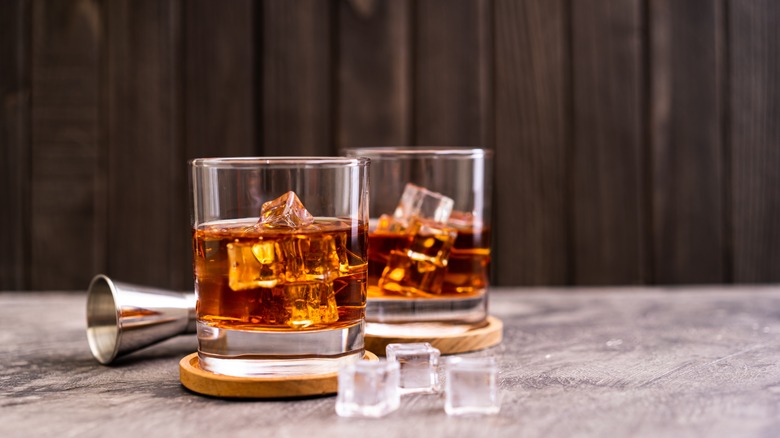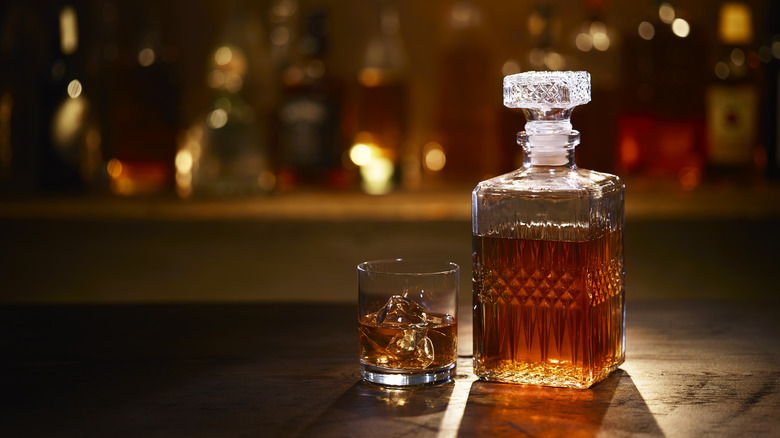The Best Type Of Bourbon To Buy For Refined Taste With A Budget Price
Many people have had to tighten their belts over the past few years, but taste is one thing that's hard to let go of. However, enjoying the finer things in life doesn't always have to come with a high price tag, especially when it comes to bourbon. We spoke to an expert about how to find quality bourbon on a budget.
Price isn't always the main way to tell the difference between high and low quality bourbon, but some things are worth the expensive price tag. Thankfully, Chris Blatner, executive bourbon steward and creator of Urban Bourbonist on Instagram, knows another tag that indicates that the liquor in a bottle is top-notch. "Look for bottled-in-bond bourbons, which offer great quality at a value price due to stringent production regulations," Blatner says. "Brands like Cedar Ridge Bottled-in-Bond or Chattanooga Whiskey Bottled-in-Bond offer excellent flavor for their price point."
The label comes from the Bottled in Bond Act of 1897, which provides instructions on how to produce spirits in the U.S., ensuring that consumers are purchasing quality bourbon. While distillers don't have to adhere to the rules, many bourbon-makers, like the ones Blatner mentioned, opt to follow them in order to meet a high standard. Even with the checklist distilleries must meet, there are still plenty of affordable bond-in-bottle bourbons. Cedar Ridge's bourbon will run you only $44.99, while a bottle of Chattanooga Whiskey's costs $52.99.
What does it mean for bourbon to be bottled-in-bond?
The creation of the Bottled in Bond Act was meant to separate authentic bourbon from the work of bootleggers and moonshine-creators of that time period. Since then, the standards haven't changed. In order to get the label, the bourbon has to be aged for at least four years, made by one distiller at a single distillery, bottled at 50% ABV, aged in a bonded warehouse, and distilled in a single distilling season, spring or fall. However, the way the seasons are defined for bourbon-making practices are a little different than how we'd typically define them; spring is from January to June, while fall ranges from July to December.
Some of these standards are mostly in line with the main guidelines for bourbon. The drink has to have an ABV of 40% to be considered bourbon in the first place. Bottled-in-bond varieties may be considered low-proof bourbons, meaning their flavor is more mellow, with each of the tasting notes being far more pronounced. The aging requirement for bottled-in-bond bourbon is double the two-year standard for regular bourbon, giving the amber liquid a smoother, deeper flavor profile. In order to ensure that the distiller is actually keeping to the standards, the bourbon is kept in a federally-owned bonded warehouse, where all of the alcohol is under the supervision of the government.

